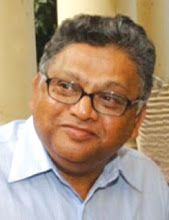STOP THE "RIOT ENTERPRENURS" IN THEIR TRACKS
P.N.BENJAMIN
On March 7, 2006, twenty persons were killed and 125 injured in twin bomb blasts in the Holy City of Varanasi. But, life returned to normal in the city quickly basically because of the remarkable restraint and control of the people of Varanasi shown in such a provocative situation. Even to this day the city presents a model of communal harmony. How did it happen?
In a show of solidarity, all sections, cutting across religious and social affiliations, observed a bandh and took out peace marches. In a spontaneous move, Benares Hindu University (BHU) students marched to the Sankat Mochan temple, where a deadly blast occurred. They reiterated their resolve to fight terrorism. Hindu and Muslim women joined hands and took out marches for communal harmony through the busy streets. So did many other organisations. They carried placards and raised slogans of Hindu-Muslim-Sikh-Christian unity and brotherhood.
Hundreds of BHU students and volunteers of the Rashtriya Swayamsevak Sangh (RSS) participated in blood donation camps. There was no shortage of blood in the hospitals where the people injured in the blasts are being treated.
Abdul Batin Nomani, Mufti-e-Banaras, a respected cleric, issued appeals for maintaining peace and communal harmony. He appealed to all sections of the people and political leaders to "refrain from making our city the boxing arena for settling political scores and deriving political mileage from such tragic incidents. Hindus and Muslims here are dependent on each other. Both communities have lived in perfect harmony and enjoyed cordial relations. If weavers are Muslims, traders are Hindus. Their economic bonds are very strong and they share a remarkable trust. This fabric should not be harmed by anyone."
Similar sentiments were expressed by Sankat Mochan Temple Foundation's chief priest, Veerbhadra Mishra, who lamented the loss of lives in the terror attack. He said such attacks would change the security scenario, and even religious places would be turned into police strongholds, restricting the free movement of devotees.
Indeed, a miracle occurred in Varanasi. It once again proved Ashutosh Varshney’s deceptively simple thesis that "the greater the patterns of inter-communal civic engagement in a city, the lower the likelihood of violent conflicts and communal riots." (Ethnic Conflict & Civic Life). For example, "the Hindus of Varanasi would not attack the Muslim artisans who make the masks and effigies for the annual Ram Lila, even if an irresponsible and bigoted politician egged them on to do so."
In many parts of India, Hindus and Muslims engage with each other in strong associational forms of civic life, from political parties and non-religious movements for social justice or land reform, to trade unions and business groups. In some places, caste is a more important divider than religion. Such networks of civic engagements bring Hindu and Muslim urban communities together. These networks may take the form of associational interaction or they be everyday forms of engagement. Both forms, if inter-communal, promote peace but the capacity of associational forms to withstand events is substantially higher. Vigorous and communally integrated associational life can serve as an agent of peace by restraining those, including politicians, who would polarise Hindus and Muslims along communal lines.
Varshney's central insight is invaluable, and its buttressing with an impressive array of facts and figures from over seven years of research means that it is solidly grounded. Varshney has no illusions about how communal riots are instigated and manipulated: whatever the proximate trigger for violence, there is always a politician with an axe to grind, pulling the strings, inflaming passions, exploiting the victims for purely political ends. But the chances for success of such politicians (the breed of "riot-entrepreneurs") would be remarkably lower if there is vigorous and communally-integrated civic life, not just through everyday casual contact but through formal associations that consolidate the mutual engagement of the two communities.
.
Communal harmony is easier extolled in seminar halls than achieved on the ground. Terrorism and fundamentalism are the twin threats to communal harmony. Spunk and harmony may not foil terrorism, but they do foil the design to divide and disrupt. One hopes that politicians, in their zeal to obtain votes do not revive communal vengeance, which has done so much harm to communal harmony and peace in the country. Hindu-Muslim civic engagement should be an urgent priority for the politicians and policemen who make public policy and in whose hands lie the safety of our fellow citizens the next when a riot is instigated
Thursday, November 10, 2011
Subscribe to:
Post Comments (Atom)

No comments:
Post a Comment